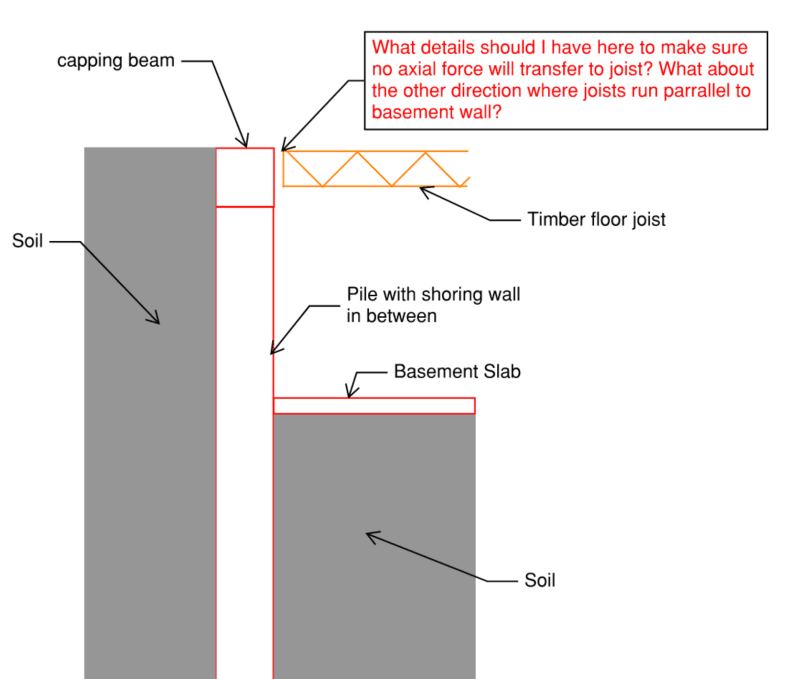Eng_zc
Structural
- Mar 4, 2023
- 6
Hi,
I have situation where I either use timber diaphragm as restraint for my basement walls (option 1) or design as cantilever basement walls (option 2).
Basement is 3m high and I am getting about 20kN/m lateral load at top which will apply to the timber floor if option 1 is used. I have found similar topic been discussed here and I tend to not go for option 1 unless someone can tell me this will work...
For option 2, my question is, how do I make sure that no compression will go to my timber floor. What kind of connection do I need here? Something similar to slotted holes?
Thanks.

I have situation where I either use timber diaphragm as restraint for my basement walls (option 1) or design as cantilever basement walls (option 2).
Basement is 3m high and I am getting about 20kN/m lateral load at top which will apply to the timber floor if option 1 is used. I have found similar topic been discussed here and I tend to not go for option 1 unless someone can tell me this will work...
For option 2, my question is, how do I make sure that no compression will go to my timber floor. What kind of connection do I need here? Something similar to slotted holes?
Thanks.


